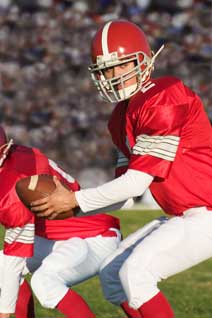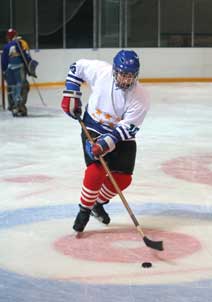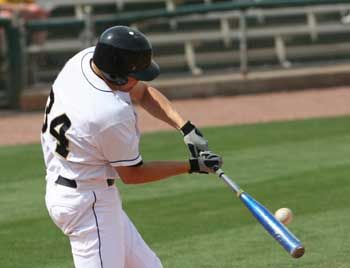
BY JIM GERARD
Who do you think are the fittest althletes? Chime in with your opinion in the comments section.
Imagine that there is a super-Olympics, in which athletes from every conceivable sport would be judged by the same standard. Who would win? Lance Armstrong? Manny Pacquiao? LeBron James? Lionel Messi? Michael Phelps?
This article hopes to, if not answer, at least shed much light on what is essentially the stuff of barroom—or maybe juice bar—arguments: What type of athletes are the most fit?
Heckler in stands to the notoriously paunchy John Kruk, of the Philadelphia Phillies: You call yourself an athlete!?
Kruk: Lady, I’m not an athlete, I’m a baseball player.
Science is of little help, because sports physiologists don't have a system to rank all athletes and, due to differences in criteria, there have been no scientifically valid studies on the subject.* Add to this the fact that there are no tests that can accurately measure whole-body flexibility and agility, plus the difficulty of obtaining the results of existing tests such as athletes’ VO2max from professional sports organizations and the like, and we’re left with enlightened subjectivity.
Dr. Jonathan L. Chang, clinical associate professor of orthopedics at the University of Southern California in Los Angeles, says that like many complex but ultimately unanswerable questions, “The determination of who’s the fittest athlete is based on your definition of fitness. And if you stick to one criterion, it makes answering easier.”
For the average gym-goer or recreational athlete, fitness is a combination of its four most basic components: cardiorespiratory endurance (as measured by VO2max), muscular strength and endurance, and flexibility.
However, because we wanted to evaluate the “fittest” from as many sides as possible, we are using a much broader definition of fitness—the sum of cardiorespiratory endurance, muscular strength and endurance, balance, power, flexibility, agility and physical skills.
A rough survey of experts in the field, including exercise physiologists and high-level athletic trainers, yielded some fascinating answers. In short, decathletes, boxers (and practitioners of Mixed Martial Arts, or MMA), “skill position” pro football players (meaning running backs, wide receivers and cornerbacks) and hockey players ranked highest.
The Case for Decathletes
Podiatrist Dr. John W. Pagliano, an American College of Sports Medicine fellow who ran in the 1968 Olympic trials, ranks athletes using the same broad criteria we used and believes that decathlon athletes are the most fit. His reasoning rests on the broad range of aptitudes these athletes must possess to participate in 10 track-and-field events over a two-day span. You want cardiorespiratory endurance? They can run 1,500 meters in 4 minutes, 20 seconds. Speed? 100 meters in 10 seconds. The shot put, discus and javelin require power, and the high jump and long jump call for agility. Balance, coordination and what Pagliano calls “skill” are needed for the pole vault and 110-meter hurdles. “And they need flexibility for every event,” says Pagliano.
Yet even these incredibly versatile performers are not without their detractors. Chang says that their relative ranking is a controversial topic. “[Decathletes] are considered either the best athletes or the most mediocre ones. There’s no question they’re fantastically in shape. But because they have to compete in 10 events, they can’t be great at any one of them. Their performance in any single event is substantially behind elite specialists in that event.”
_______________________________________________________________________________
* Probably the closest thing were the findings, published in The Wall Street Journal in 2008, of a panel of five sports scientists and exercise physiologists. Using criteria very similar to those used in this article, they named decathlete Roman Sobrely as the world’s fittest athlete.
Boxers and Mixed Martial Artists
Boxers scored high in the informal ACE poll. Exercise physiologist Dr. Jeffrey A. Potteiger, a professor at Grand Rapids State University in Grand Rapids, Mich., spoke for the “sweet science” contingent. “While I haven’t seen any measures of fitness for boxers, they’re very strong, powerful and quick, and have a pretty high level of cardiorespiratory fitness.” (He pondered including wrestlers, but had reservations about their endurance levels.)

Chang agrees that boxers are extremely fit in many ways, “and if they’re not good at everything they do, they’re going to get knocked out.” However, he felt that while boxers needed agility and upper-body speed (to throw punches), leg speed was not crucial, which is why he ranked them slightly behind football players.
Todd Durkin, owner of Fitness Quest 10 in San Diego, and author of The IMPACT! Body Plan, disagrees. Having worked with dozens of professional athletes in the National Football League and Major League Baseball, Durkin asserts, “I would put a top mixed martial artist (MMA) or boxer up against a decathlete, strictly on the basis of fitness performance." After all, Durkin explains, an MMA athlete employs a wide range of fitness attributes (including perhaps the leg speed for kicking that Chang felt boxers lacked) at high intensity “while someone is trying to choke him.”
Football Players
In Chang’s estimation, a skills player in the NFL will probably have the widest combination of fitness attributes. “In most sports, you need to concentrate on only one or two criteria,” he says. “But to succeed in football, you have to do many things well—and take a hit.”

Durkin echoes this: “Cornerbacks, wide receivers and running backs are some of the fittest athletes possible. They can train at extremely high intensity, for a prolonged period of 60 to 90 minutes. They apply speed, power, endurance, coordination, quickness, rhythm and strength to many skills and tasks. And they have very low body fat.”
Yet Durkin admits that they’re not perfect. “If you reduced your criteria to strength, endurance and flexibility, football players would lose a bit, because they’re not as flexible as, say, basketball players.”
Hockey Players

The typical NHL player comes in a package that melds strength, agility, power, speed and flexibility. That’s why Pagliano ranked them only behind decathletes and boxers. “They gain points for overall fitness and lose a few because they’re on skates, which requires less effort than, say, basketball players. On the other hand, they require a high degree of skill and balance.”
Potteiger disagrees: “I consider hockey as more of a skill sport. I’ve done some performance testing on them and they’re strong, but not as much as you think. They don’t have the endurance of basketball players. Hockey players go all out in 30- to 60-second shifts, then get a break.”
Who Didn’t Make the Cut—and Why
Surprisingly, triathletes ranked near the bottom of our unofficial survey. Pagliano says, “They lack speed, strength and the skill to, say, hoist themselves with a pole over an 18-foot bar.”
The same caveats apply to endurance runners and cyclists. “Lance Armstrong,” argues Potteiger, “doesn’t have upper-body strength and he wouldn’t do as well throwing the shot put as, for example, a pro football player. Even sprinters, who possess plyometric power and speed, don’t have the all-around physical ability of a decathlete.”

Dr. Carl Foster, director of the Human Performance Laboratory at the University of Wisconsin, LaCrosse, rules out some other candidates: “Soccer players are neither remarkably strong nor do they have remarkable endurance, but they are better than average in both. Strongman competitors usually have poor endurance, but they are very strong.”
Sports such as baseball and golf (does it even qualify?) tilt more toward elite skills than overall fitness. “You could be a very good baseball player but not necessarily be a good athlete,” Potteiger says.
More Questions Than Answers
Potteiger says that factors beyond physical capacity also cloud our ability to evaluate the fittest athlete.
First, there’s the issue of self-selection. Potteiger believes that many pro athletes—such as LeBron James—would be successful decathletes, but choose not to, probably because of the sport’s low profile and earning potential. At some point, the multisport athlete has to specialize to become successful. And even within a sport, certain skills are more or less important than others. (Take basketball—a point guard needs quickness, but a center may not.)
How the Fittest Train
Now that we’ve reached educated conclusions about the fittest athletes, you may be wondering what kind of training it takes to become one. Durkin, who trains many pro athletes, gave us a detailed look. In the off-season his charges will do a 45- to 60-minute high-intensity interval workouts three to four times a week. As the season approaches, they’ll work out longer (up to two-and-a-half hours a day), working both the upper and lower body, incorporating weights and on-field sport-specific activities. A typical weekly breakdown is:
- Monday and Thursday: lower body and core
- Tuesday and Friday: upper body
- A peak workout for the lower body consists of some combination of squats, lunges, side lunges, plyometrics, single leg Romanian deadlifts, kettlebell swings and lateral band walks (for the hips), using a Superband. Core work includes exercises using the TRX Suspension Trainer, Swiss balls and BOSU balls, push-passes with a medicine ball, total gym knee tucks and rotational training work for the hips and core on the TRX Rip Trainer. “We’ll do four to six lower-body exercises, plus five to 10 sets of core training,” Durkin says.
- The next day, the upper-body work consists of four to six exercises (two to four sets of each) from among the following: balance-board push-ups, stability ball dumbbell bench press, TRX rows, Total Gym pull-ups, TRX movements for the shoulder and back, and one-arm rows and other traditional strength-training exercises on machines or with free weights. He also uses relatively esoteric equipment such as fat bars (which are thicker, harder-to-grip barbells) or rice buckets (to strengthen fingertip grip).
- Some days Durkin adds 30 to 40 minutes of agility drills that replicate moves on the field (with a 1:2 or 1:3 work-to-rest ratio; that is, 20 seconds of work, 40 seconds of rest) using cones, ladders, hurdles and Superbands.
- If those weren’t enough, he adds supplementary exercises for the neck, feet and ankles.
So, if as Chang says, “the fittest athlete is in the eye of the beholder,” anyone who can survive Durkin’s workouts can probably claim the mantle.
__________________________________________________________________________

Jim Gerard is an author, journalist, playwright and stand-up comic. He has written for the New Republic, Travel & Leisure, Maxim, Cosmopolitan, Washington Post, Salon, Details, New York Observer, and many other magazines. For more information, visit his site at www.gangof60.com.